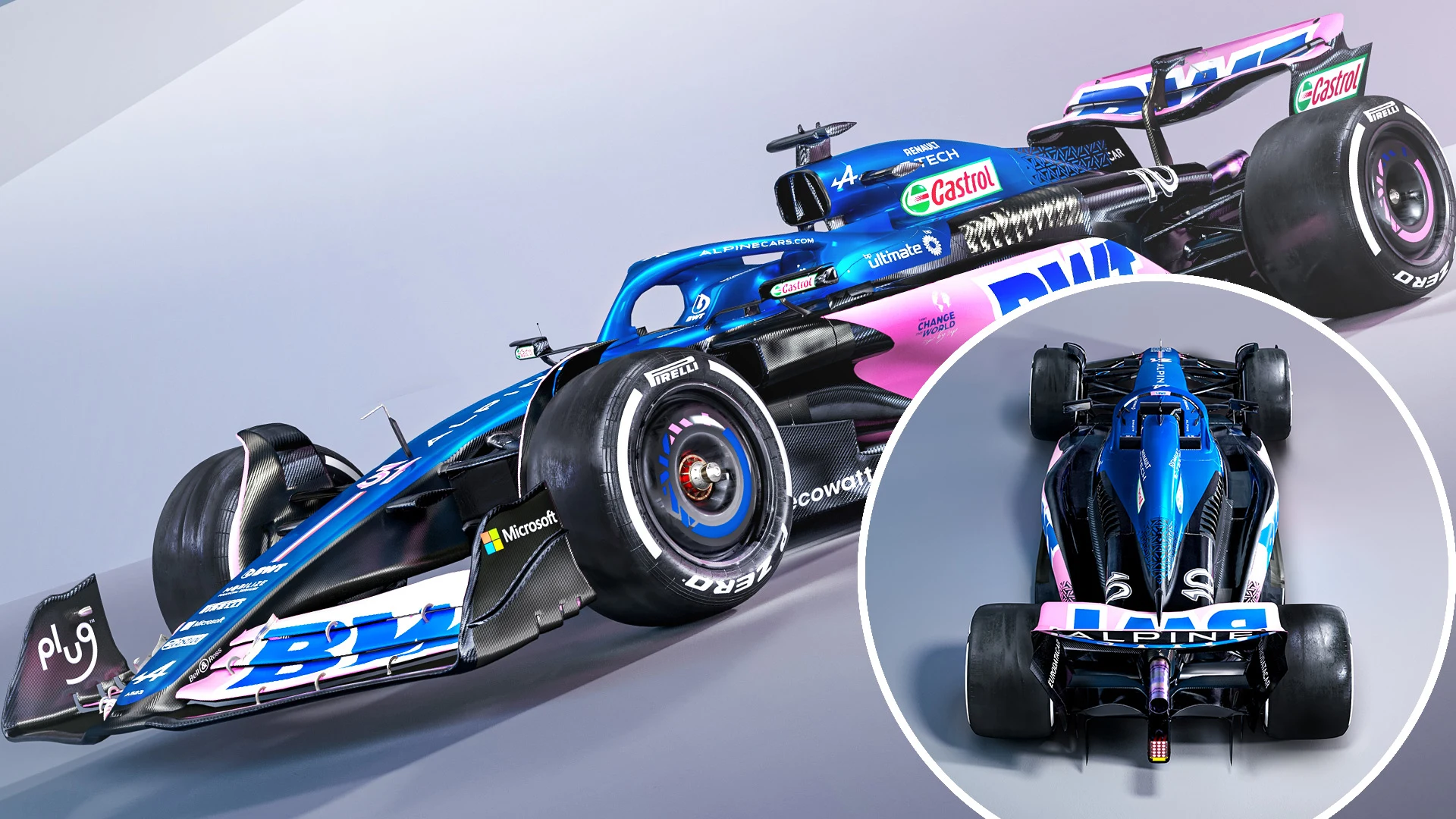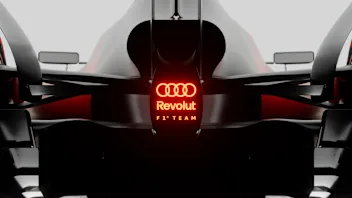Alpine were the last team to unveil their 2023 F1 car – the A523 – and it marks a huge change in philosophy over last year's machine. Mark Hughes unpacks the changes to the midfield team's new car as they aim to break into the top three.
Alpine’s A523 represents a very significant evolution to last year’s car, totally rebodied and different from its new front wing and wider nose to its new push rod rear suspension.
Aggressive aerodynamic and weight targets have been met and the car is actually under the weight limit, allowing it to place ballast to suit the demands of individual circuits.
A new front wing hangs from a new wider, flatter nose. The bottom flap of the wing is now attached to the nose rather than hanging from it. Technical Director Matt Harman says the new nose structure gives more freedom to make changes to the front wing elements, again giving more set-up adjustability.
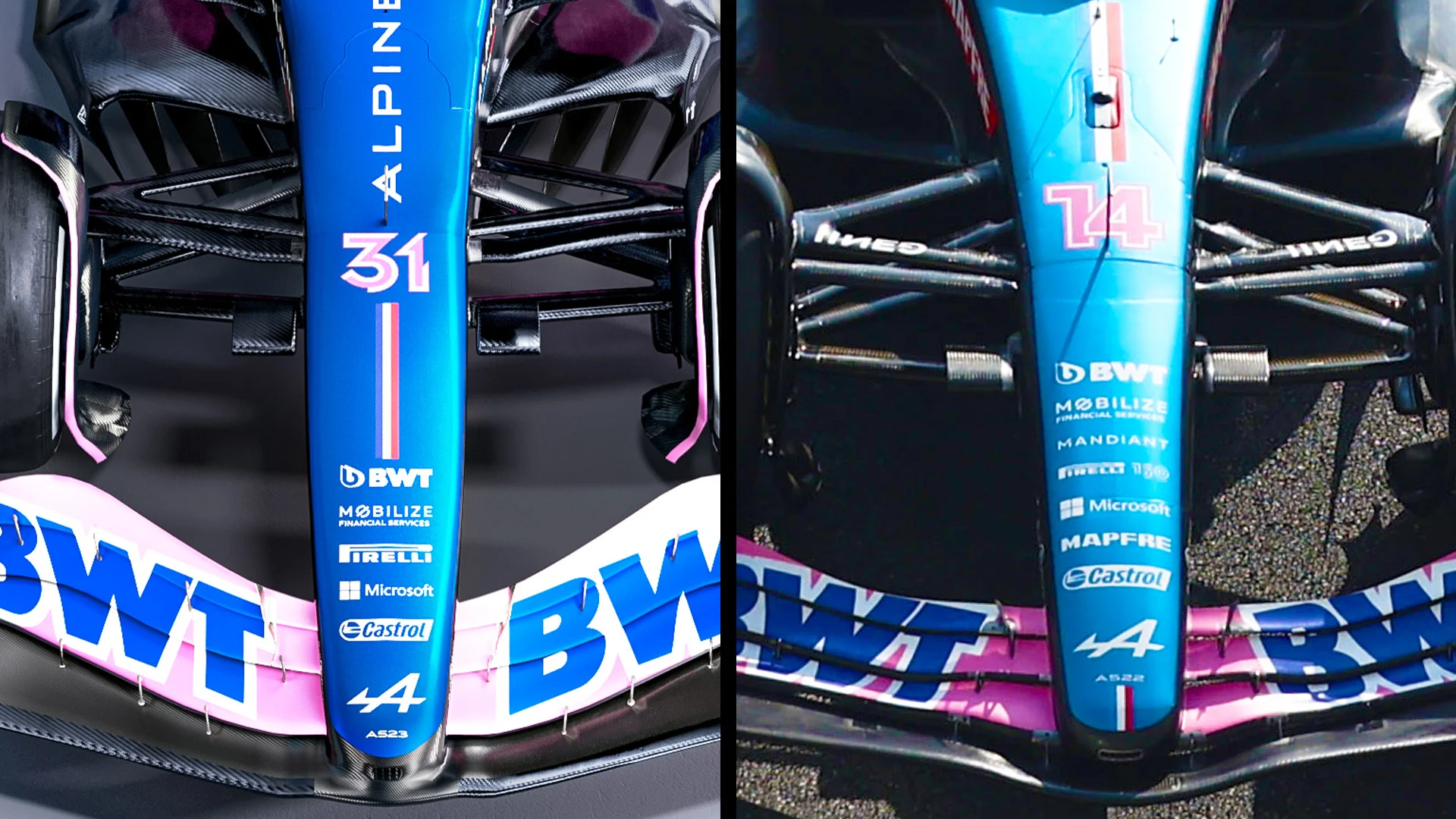
The front suspension retains the previous pushrod layout but the geometry has been changed to incorporate greater resistance to dive under braking. This is for the sake of the aero platform which is more important than ever with this generation of ground effect car because the car’s attitude can determine which proportion of the incoming air goes over the body and under the floor. If this proportion changes too much during braking and into the corner, the powerful underfloor means that if it is suddenly starved, the rear can be unstable, only to return to a less responsive, benign balance mid-corner when the car has levelled out. This is the opposite of what’s desired, which is a stable rear on turn-in but good responsive rotation through the corner. This is a big focus of effort for all teams under this regulation set.
The front suspension geometry change is actually a good clue for how the team have set about making those aero gains. Although last year’s car proved generally well-balanced and more consistent than their midfield rivals, they couldn’t combine this with the sort of downforce levels achieved by the top teams. We can see on the A523 that there is a totally different arrangement of inlets to the floor tunnels, inferring a redesign of the whole underfloor area and how it is working that vital part of the airflow.
The underfloor is the dominant part of this generation of car’s performance.
READ MORE: 5 surprises, tech trends and brave calls from the 2023 F1 launch season
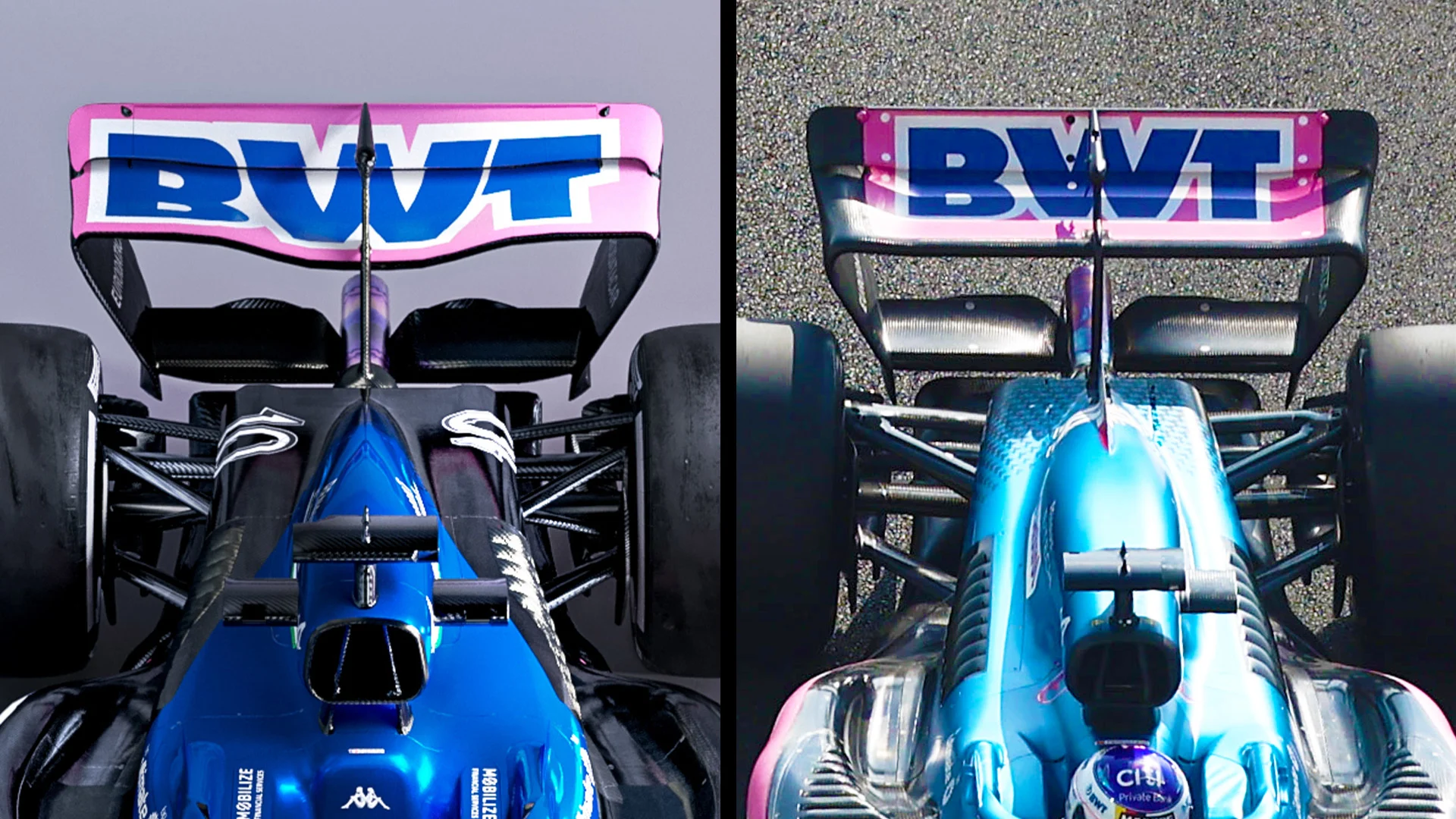
Radiator arrangement and the sidepod geometry that allows are all largely determined by getting the floor to work as hard and consistently as possible. That goes for the front and rear suspension geometries too.
As with almost all the 2023 cars, there has been a reassignment of radiator area and in this case Alpine has used that to achieve narrower sidepods, with a bulkier shoulder area above. The sidepod tops now feature a deep Ferrari-like trench, channelling airflow to the beam wing and keeping it from spilling over cockpit sides, so keeping that flow highly energised and also helping to scavenge the radiator outlet louvres there.
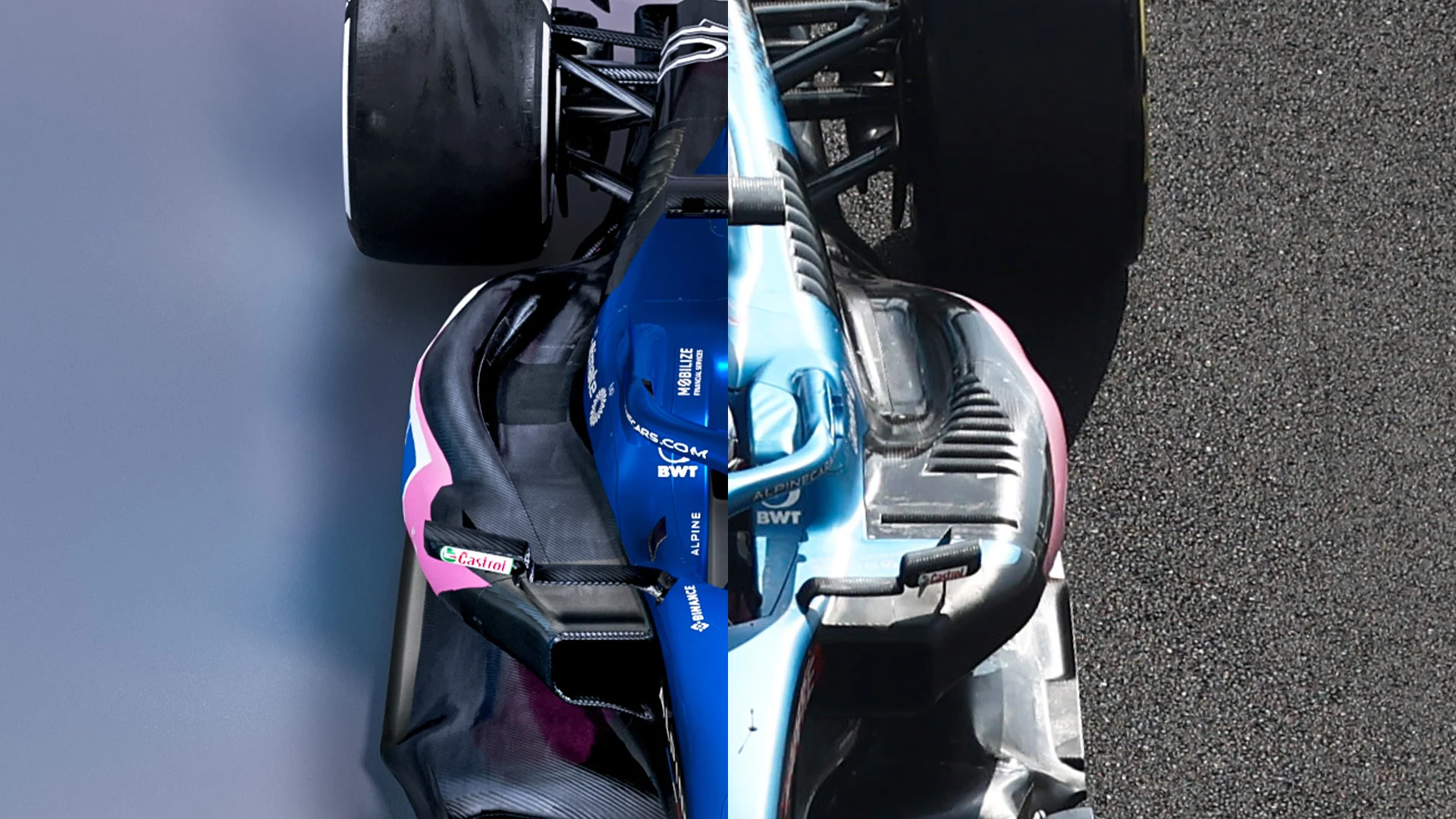
Last year’s car’s very stiff floor and wide body kept the aerodynamic porpoising at bay, achieving a good level of control of it by way of front and rear ride heights. With the better control of the aero platform they feel they have achieved – and perhaps aided by that new nose and wing arrangement – they have been confident enough to move away from the wide sidepod.
VOTE: Pick your favourite livery of the 2023 F1 cars
The rear of the car has been completely refashioned, with a switch from pullrod to pushrod activation for the suspension. Matt Harman says this has enabled a simpler and lighter installation. The lower placement of the suspension rockers with a pushrod layout is probably partly responsible for how the bodywork comes down lower towards the rear axle than before.
Reliability upgrades for the power unit and a reduction in its turbo inlet plenum temperature promise some performance gain there too.
More technical analysis of the 2023 F1 cars
Ferrari's 2023 SF-23 – A complete redesign or subtle evolution?
Mercedes stick to their guns on unique sidepod design with new W14
Is it a case of evolution or revolution for McLaren’s new MCL60?
What we learned from a first look at the brand-new Alfa Romeo C43
Unpacking the 'aggressive' new Aston Martin AMR23
The key design features revealed by Haas’s shakedown runs in the VF-23
Why AlphaTauri’s livery launch gave us some fascinating clues about the AT04
Williams continue Red Bull-like trend with FW45 design
Next Up

